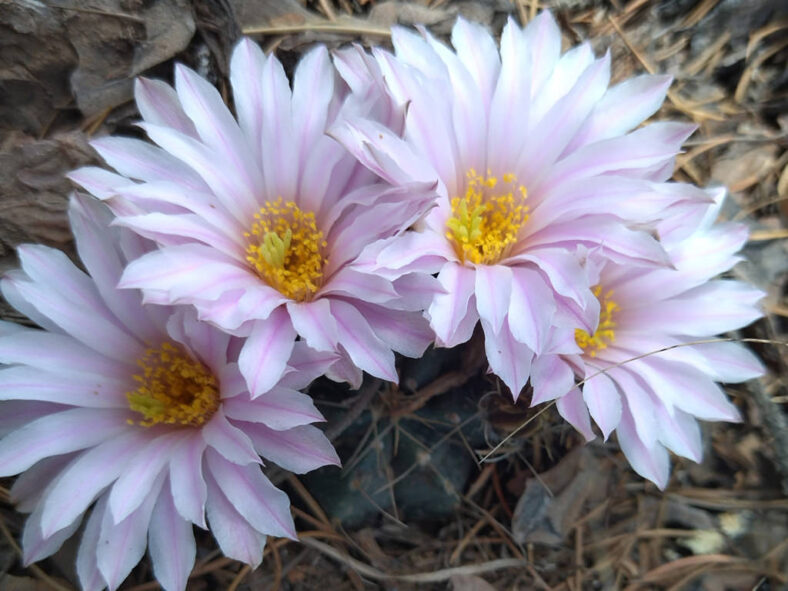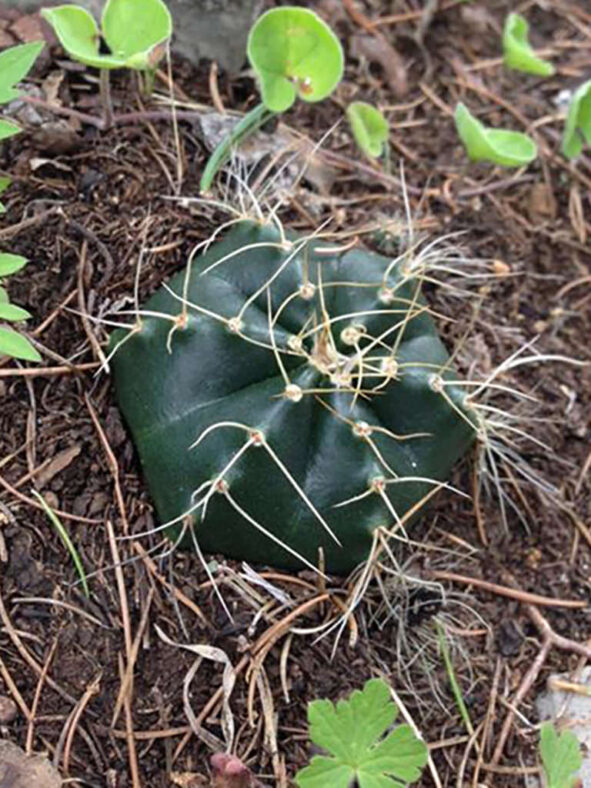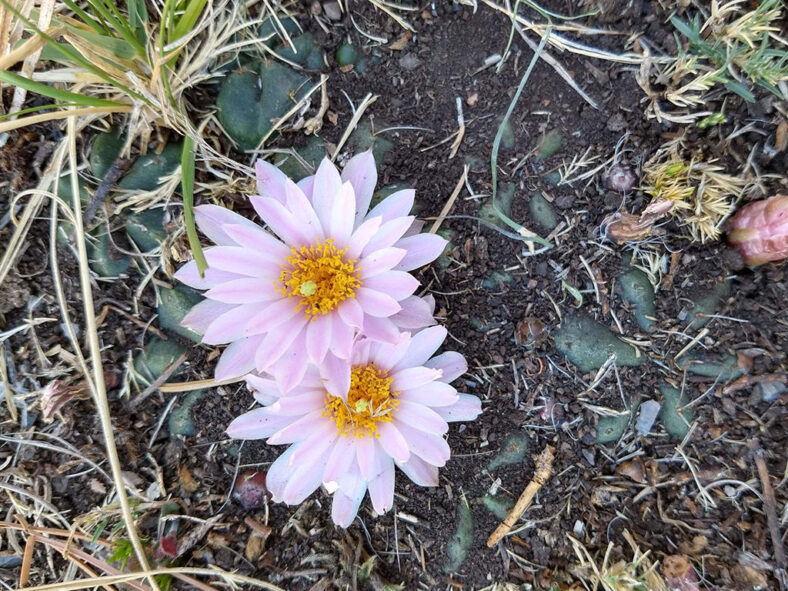Echinocereus knippelianus is a variable species in size, stem color, spine length, and flower color. It was first described by C. Liebner in 1895.
Scientific Name
Echinocereus knippelianus Liebner
Synonym(s)
Cereus knippelianus
Scientific Classification
Family: Cactaceae
Subfamily: Cactoideae
Tribe: Pachycereeae
Genus: Echinocereus
Etymology
The specific epithet "knippelianus" (pronounced "ni-pel-ee-AY-nus") honors Carl Knippel, a German cactus breeder who lived in Halberstadt.
Origin
Echinocereus knippelianus is native to Mexico. It is widespread in Coahuila and Nuevo León in open grasslands and pine forests at elevations between 6,560 and 7,220 feet (2,000 and 2,200 m).
Description
Echinocereus knippelianus is a small cactus with spherical stems that typically have 5 to 7 low, wide ribs. It can grow either as a solitary plant or, more commonly, produce offsets at the base, forming clumps of up to 50 stems. The stems can vary in color from green to blackish-green. They can reach a diameter of 3.2 inches (8 cm) and usually do not extend far beyond the soil surface in their natural habitat.
Each areole can bear up to 4 straight or twisted, light yellow spines, although spines may sometimes be absent. The size of the spines is highly variable, with some measuring up to 2.4 inches (6 cm) in length.
In the spring, Echinocereus knippelianus produces funnel-shaped flowers ranging in color from pink or slightly purple to white. The flowers appear near the tips or sides of the stems and can reach a length of 1.6 inches (4 cm) and a diameter of 2.6 inches (6.5 cm). The spherical fruits are purple and may have one or more spines and some wool.

How to Grow and Care for Echinocereus knippelianus
Light: Although it can tolerate partial shade, Echinocereus knippelianus thrives in full sun. If growing indoors, place it in a sunny window and rotate the pot a quarter turn every week or two to ensure balanced growth. If possible, move the plant outdoors from spring to fall.
Soil: Good drainage is essential for the health of this cactus, as it does not like wet feet. You can use commercial soil mixes for cacti or make your own well-draining soil.
Hardiness: Echinocereus knippelianus prefers warmer temperatures during its growing season and cooler temperatures during winter when it is dormant. It grows best in USDA Plant Hardiness Zones 9b to 11b, with average minimum winter temperatures ranging from 25°F to 50°F (-3.9°C to 10°C).
Watering: Water thoroughly from spring to fall, allowing the soil to dry out between waterings. Gradually reduce the watering frequency in the fall. When the plant is dormant in winter, water it only enough to prevent shrinking.
Fertilizing: For optimal growth, use water-soluble fertilizer diluted to 1/4 strength, ideally a balanced 10-10-10 formula. Do not fertilize in the winter.
Repotting: When young, repot Echinocereus knippelianus each year in early spring. Once mature, repot it only when it outgrows its pot.
Propagation: This cactus can be propagated either by offsets or seeds. The best time to remove offsets is spring and summer, while late spring and early summer are ideal for sowing seeds.
Learn more at How to Grow and Care for Echinocereus.
Toxicity of Echinocereus knippelianus
Echinocereus knippelianus is considered non-toxic to humans and animals.
Links
- Back to genus Echinocereus
- Succupedia: Browse succulents by Scientific Name, Common Name, Genus, Family, USDA Hardiness Zone, Origin, or cacti by Genus
Photo Gallery
Click on a photo to see a larger version.


